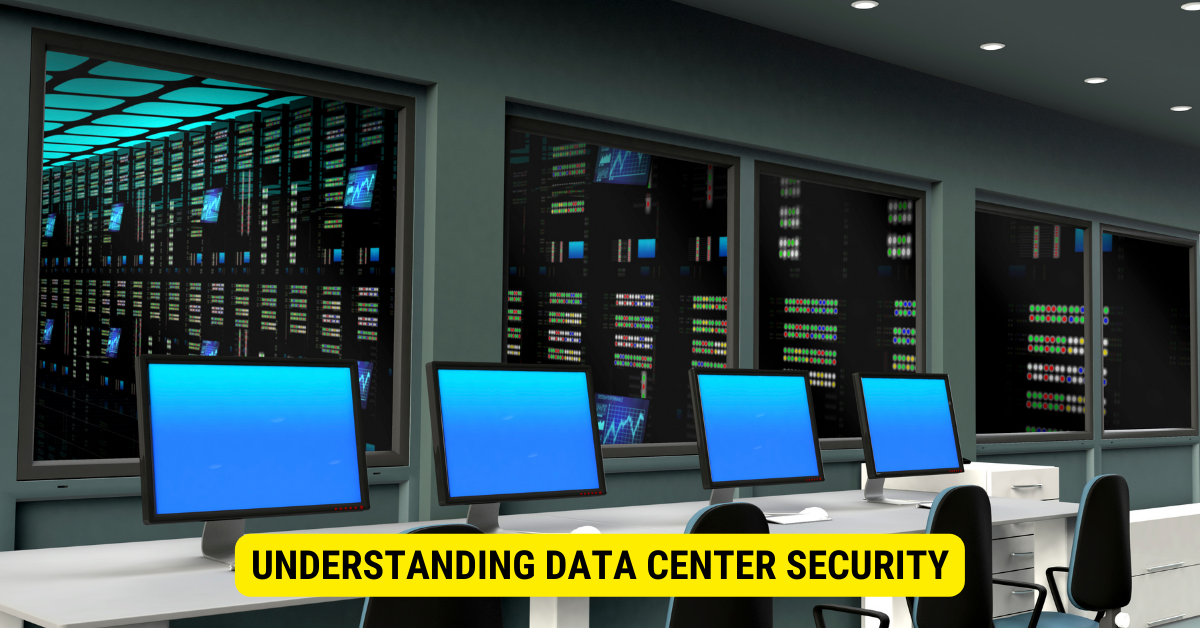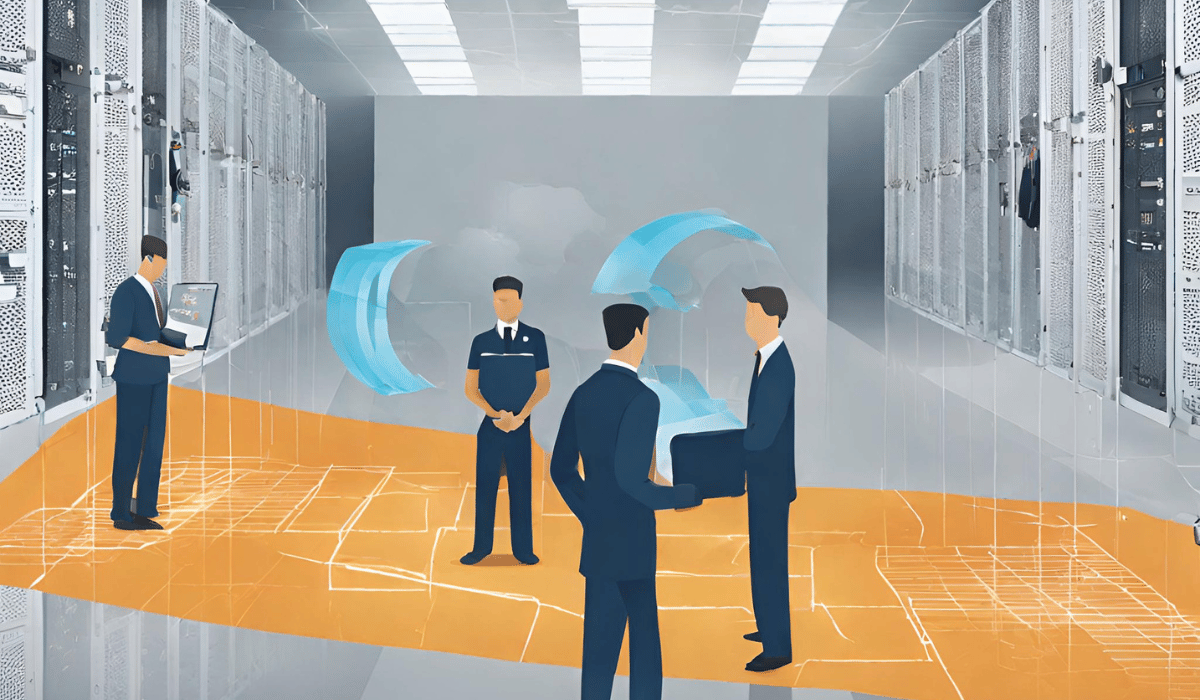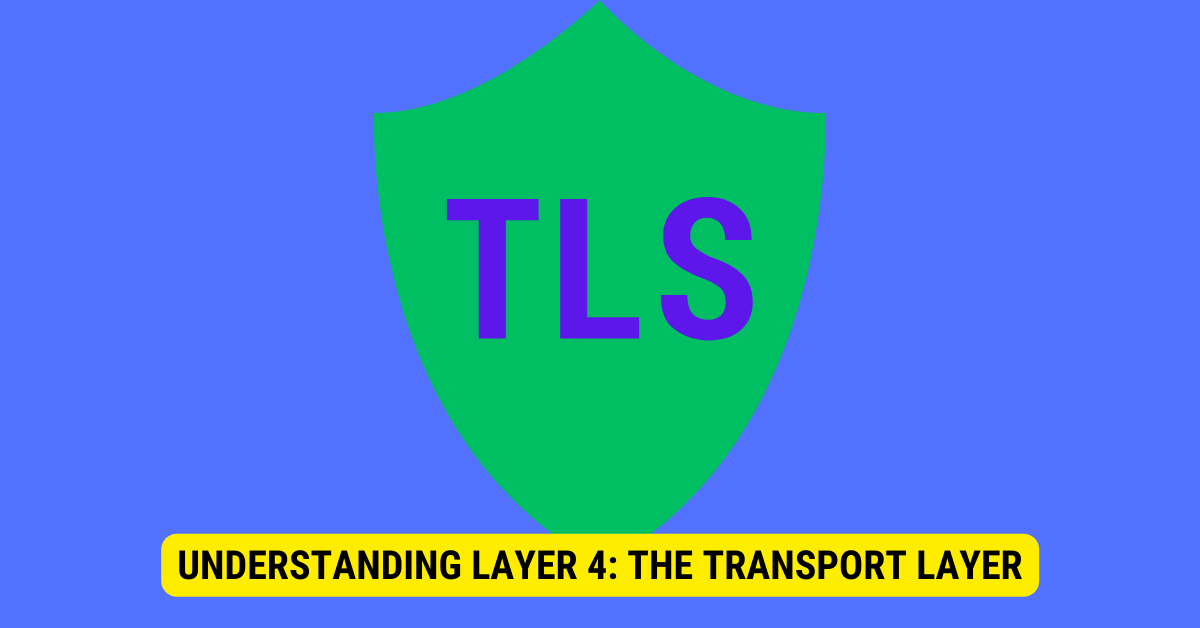Data center security Layer 4 refers to the transport layer security, ensuring the safe and reliable transmission of data packets between devices.
Data center security is crucial to preserving the integrity and confidentiality of a company’s sensitive information. Layer 4 refers to the transport layer in the OSI model, which plays a significant role in data center security. Understanding the importance of data center security and the key components involved is essential for implementing effective security measures.
Understanding Data Center Security

Regarding data center security, numerous layers and components work together to protect valuable information. Layer 4, the transport layer, operates on the fourth level of the OSI model and manages the reliable delivery of data across networks. Its primary functions include data segmentation and reassembly, establishing and terminating connections, and error control.
The Importance of Data Center Security

Data center security is critical for safeguarding the company’s data and the sensitive information of its clients. Data center security breaches can lead to severe penalties, such as financial loss, damage to reputation, and legal repercussions. By implementing robust security measures at every layer, including layer 4, organizations can mitigate the risks and ensure the confidentiality, integrity, and accessibility of their data.
Key Components of Data Center Security
Several components need to be in place to achieve comprehensive data center security. These include physical security measures such as access controls, video surveillance, and environmental monitoring. Additionally, network security measures like firewalls, intrusion detection systems, and virtual private networks (VPNs) are crucial in protecting data during transmission. Layer 4 security mechanisms add an extra layer of protection by ensuring the secure transmission of data across networks.
Physical security measures are essential for preventing unauthorized access to the data center. Access controls, such as biometric authentication and keycard systems, ensure only authorized personnel can enter the facility. Video surveillance systems, including CCTV cameras and motion detectors, monitor the data center environment and record suspicious activities. Environmental monitoring systems, such as temperature and humidity sensors, ensure optimal conditions for the equipment and detect any abnormalities that could potentially impact the data center’s security.
Network security measures are crucial for protecting data during transmission. Firewalls act as a barrier between the inner network and external threats, filtering incoming and outgoing traffic based on predefined security rules. Intrusion detection systems (IDS) monitor network traffic for signs of unauthorized access or malicious activities, triggering alerts or taking preventive actions. Virtual private networks (VPNs) establish encrypted connections between remote users or networks and the data center, ensuring secure communication over public networks.
Layer 4 security mechanisms add an extra layer of protection to the data center. These mechanisms focus on the reliable delivery of data across networks. Segmentation and reassembly of data ensure that large amounts of data are divided into smaller, manageable units for efficient transmission. Establishing and terminating connections ensure that data is transmitted securely between the sender and receiver. Error control mechanisms detect and correct any errors that may occur during transmission, ensuring the integrity of the data.
Organizations can create a robust data center security infrastructure by implementing a combination of physical security events, network security measures, and layer 4 security mechanisms. This multi-layered approach ensures that data is protected at every stage, from storage to transmission. It gives organizations the confidence that their valued information is secure and protected from potential threats.
An Introduction to Network Layers
The OSI model, or Open Systems Interconnection model, is a conceptual outline that defines the communication functions of a network. It consists of seven layers, each responsible for specific tasks. These layers work together to enable network communication and ensure data integrity and security.
Overview of the OSI Model
The OSI model is separated into seven layers: Physical, Data Link, Network, Transport, Session, Performance, and Request. Each layer has its own set of protocols and functions, contributing to the overall functionality of the network.
The physical layer, or layer 1, is answerable for the actual transmission of data over physical media such as cables or wireless signals. It defines communication’s electrical, mechanical, and procedural aspects, including the type of connectors and data encoding.
The data link layer, or layer 2, is responsible for the reliable data transmission between two nodes on the same network. It delivers error detection, correction, and flow control to ensure that data is transmitted accurately and efficiently. Ethernet and Wi-Fi are examples of data link layer protocols.
The network layer, or layer 3, handles data routing across different networks. It determines the best path for data to travel from the source to the destination, considering factors such as network crowding and the availability of alternate routes. The Internet Protocol (IP) is a commonly used network layer protocol.
The transport layer, or layer 4, is critical to data center security. It focuses on the reliable delivery of data across networks. Layer 4 breaks down the data received from the session layer into smaller segments and reassembles them at the receiving end. It also handles flow control, error detection and correction, and congestion control. Protocols commonly associated with layer 4 include Transmission Control Protocol (TCP) and User Datagram Protocol (UDP).
Understanding Layer 4: The Transport Layer

The transport layer, also called layer 4, is an essential component of the OSI model. Its primary function is to ensure the reliable delivery of data across networks. Layer 4 achieves this by breaking down the data received from the session layer into smaller segments, known as packets or datagrams, and reassembling them at the receiving end.
Layer 4 protocols, such as TCP and UDP, facilitate communication between applications on different devices. TCP provides a reliable, connection-oriented service, guaranteeing that data is delivered in the correct order and without errors. On the other hand, UDP offers a connectionless, unreliable service, which is suitable for applications prioritizing speed and efficiency over data integrity.
In addition to segmenting and reassembling data, the transport layer handles flow control, error detection and correction, and congestion control. Flow control ensures that the sending device does not overwhelm the receiving device with data, preventing packet loss and network congestion. Error detection and correction mechanisms, such as checksums, allow the receiving device to verify the data’s integrity and request retransmission if errors are detected. Congestion control mechanisms help manage network congestion by regulating the rate at which data is transmitted.
The transport layer is responsible for end-to-end messages between applications on different devices. It provides a reliable and efficient means of data transfer, ensuring that data is delivered accurately and promptly. Without the transport layer, applications would struggle to communicate effectively over networks, resulting in unreliable connections and compromised data integrity.
The Role of Layer 4 in Data Center Security
Layer 4 plays a vital role in ensuring data security through a data center. Its functions and features protect information against unauthorized access, interception, and tampering.
How Layer 4 Contributes to Data Protection?
Layer 4 provides several mechanisms that enhance data protection in a data center environment. It establishes secure connections between systems, authenticates users, and encrypts data during transmission. These measures ensure that data remains confidential and protected from unauthorized access.
When establishing secure connections, Layer 4 employs protocols such as Transmission Control Protocol (TCP) and User Datagram Protocol (UDP). TCP ensures reliable and ordered delivery of data packets, while UDP is used for faster transmission with no delivery guarantee.
In addition to establishing secure connections, Layer 4 plays a crucial role in user authentication. By implementing access control lists (ACLs) and authentication mechanisms, Layer 4 ensures only authorized users can access the data center resources. This helps prevent unauthorized access and protects sensitive information from falling into the wrong hands.
Another significant contribution of Layer 4 to data protection is data encryption during transmission. By utilizing encryption algorithms, such as Advanced Encryption Standard (AES) or Secure Hash Algorithm (SHA), Layer 4 ensures that data is encoded in a way that makes it unreadable to anyone without the proper decryption key. This enhances an additional layer of security, making it extremely difficult for attackers to interrupt and decipher the transmitted data.
Layer 4 Security Features and Mechanisms
Layer 4 offers various security features and mechanisms to enhance data center security. Firewalls, which operate at the transport layer, filter network traffic based on predefined rules to prevent unauthorized access.
Firewalls protect data centers from external threats by inspecting incoming and outgoing network traffic. They analyze the packets passing through Layer 4, checking for suspicious or malicious activities. If a packet violates the predefined rules, the firewall blocks it, preventing potential attacks from reaching the data center’s internal network.
In addition to firewalls, Layer 4 also leverages Secure Socket Layer (SSL) and Transport Layer Security (TLS) protocols to provide encryption and authentication, ensuring secure communication between systems. SSL and TLS protocols establish a secure channel between a client and a server, encrypting the data exchanged during communication. This encryption makes it very difficult for attackers to eavesdrop on the communication or tamper with the transmitted data.
Furthermore, Layer 4 incorporates intrusion detection and prevention systems (IDPS) to detect and mitigate potential security breaches. IDPS monitors network traffic, identifying any suspicious activities or patterns that may indicate an ongoing attack. Once an attack is detected, the IDPS takes immediate action to prevent further compromise, such as blocking the attacker’s IP address or alerting the system administrators.
Layer 4 also enables load balancing, which allocates inbound network traffic across multiple servers to optimize performance and prevent overload. By efficiently distributing the workload, load balancing ensures that no single server becomes a bottleneck, reducing the risk of system failures and potential security vulnerabilities.
In conclusion, Layer 4 is a crucial component of data center security. Its secure connection establishment, user authentication, data encryption, firewall protection, and other security mechanisms contribute to the overall protection of data transmitted through a data center. By implementing Layer 4 security measures, organizations can ensure the confidentiality, integrity, and accessibility of their valuable data.
Best Practices for Layer 4 Security
Organizations should consider best practices to optimize protection when implementing layer four security measures. These practices include regularly updating firewall rules, employing intrusion prevention systems, implementing strong access controls, and conducting regular security audits.
Common Challenges and Solutions in Layer 4 Security Implementation
Implementing layer four security measures can present challenges for organizations. These challenges include balancing security and performance, managing the complexity of security configurations, and addressing emerging threats and vulnerabilities. Organizations can overcome these challenges by leveraging advanced security solutions, adopting automation techniques, and staying updated on security trends.
Case Studies of Layer 4 Data Center Security
Examining real-world examples of effective layer four security implementations can provide valuable insights for organizations looking to enhance their data center security.
Success Stories of Effective Layer 4 Security
Several organizations have successfully implemented layer four security measures and significantly improved data center security. These success stories demonstrate the importance of robust security practices and layer four’s positive impact in protecting valuable data.
Lessons Learned from Layer 4 Security Breaches
Unfortunately, layer four security breaches can still occur, highlighting the need for continuous improvement and vigilance. Analyzing past security breaches helps organizations identify vulnerabilities and adjust their security strategies accordingly. Lessons learned can be incorporated into future security plans to prevent similar incidents.
Key Takeaways
- Layer 4 security focuses on the transport layer of the OSI model.
- Its main goal is to provide secure and reliable data transfer.
- Layer 4 security methods include TCP and UDP port security.
- Techniques like SSL/TLS operate at this layer to provide encrypted communication.
- Ensuring Layer 4 security is crucial for the overall security of data centers.
FAQs
Q: What is the OSI model?
A: The OSI (Open Systems Interconnection) model is a conceptual framework for understanding network interactions in seven layers, from physical transmission to application.
Q: Why is Layer 4 security important?
A: It ensures safe and reliable data packet transfer, crucial for data integrity and availability.
Q: What is the difference between TCP and UDP regarding Layer 4?
A: TCP (Transmission Control Protocol) is connection-oriented and ensures data delivery, while UDP (User Datagram Protocol) is connectionless and faster but does not guarantee delivery.
Q: How does SSL/TLS relate to Layer 4?
A: SSL/TLS (Secure Sockets Layer/Transport Layer Security) are cryptographic protocols that operate at the transport layer to provide secure data transmission.
Q: Is Layer 4 the only layer that needs security in a data center?
A: No, security measures are necessary across all OSI model layers to ensure comprehensive data center security.
Conclusion
In conclusion, data center security at layer 4 is essential for safeguarding valuable information from unauthorized access, interception, and tampering. Understanding the role of layer 4 in data center security, implementing best practices, and learning from real-world examples help organizations enhance their security measures and protect their data assets.
